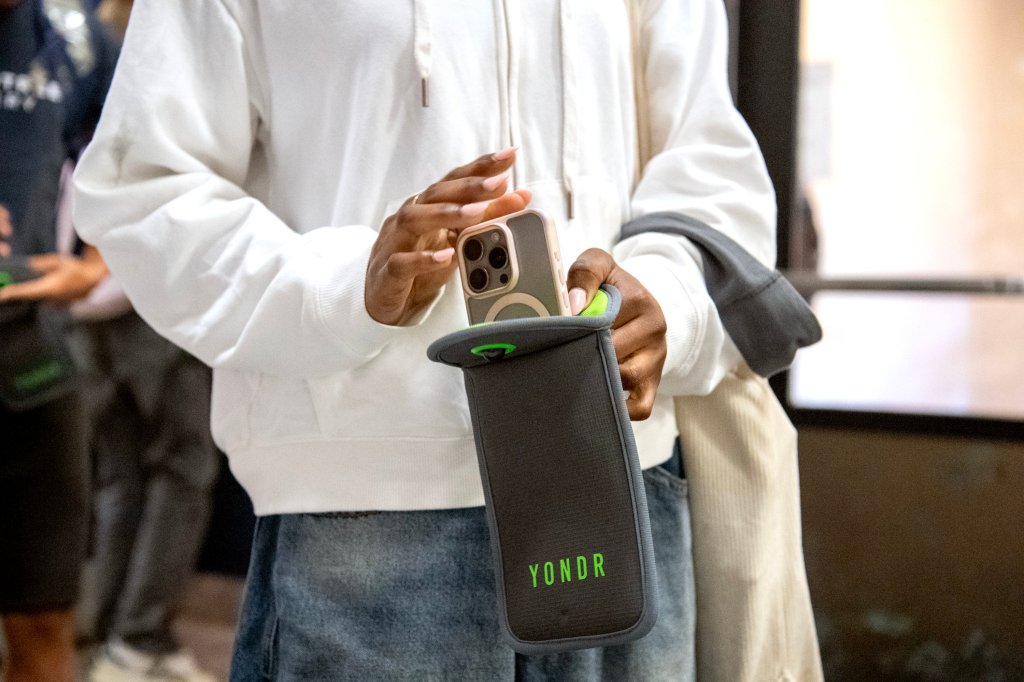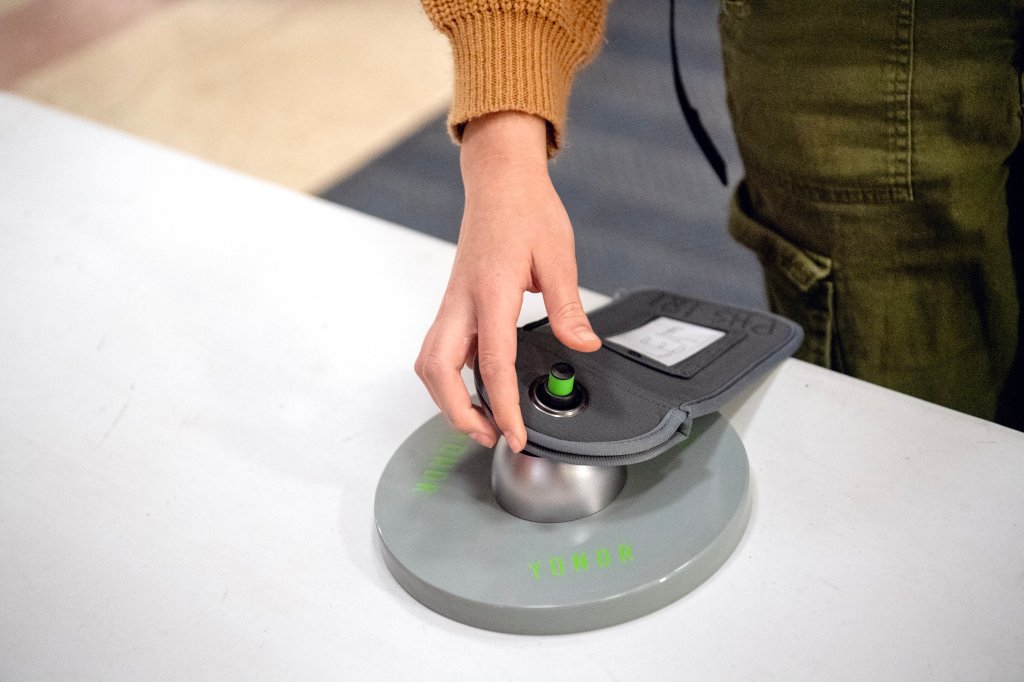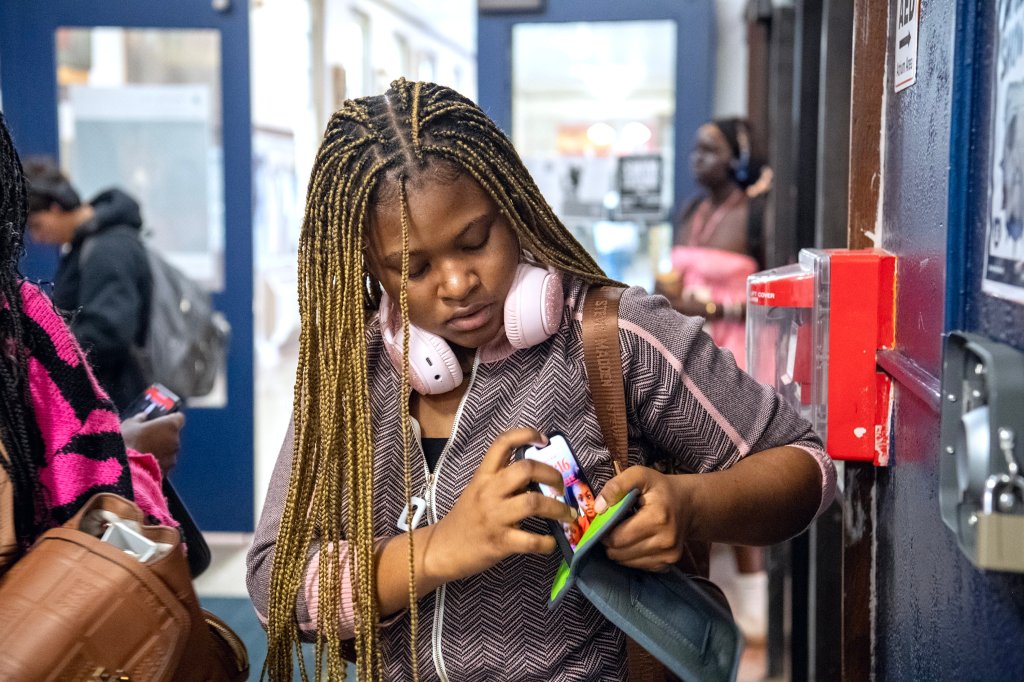
PORTLAND — At 9:35 a.m. Tuesday the bell rang and students flooded into the halls of Portland High School, chatting, grabbing books from their lockers and running into friends before they headed to their second block of the day.
Their hands were conspicuously free of the devices so ubiquitous in teenage lives: cellphones.
It’s exactly the effect Portland school leaders hoped for when they joined the wave of cities and states enacting school day cellphone bans this fall.
About a week into the school year, staff, students and teachers at Portland High agree that the adjustment to the new policy has been smooth.
“It’s been a lot different compared to what we’re used to,” junior Jeremiah Spradley said. “But it’s also been working pretty good for students.”
Students in New York and Texas, states that have rolled out phone bans this year, said largely the same thing this week. Many other school districts across Maine could be watching to see how Portland’s policy is received.
The Portland district is employing a system of magnetically locking pouches, called Yondr Pouches, that are common at schools that have implemented phone-free policies. Students are each assigned one of the green-and-gray fabric bags, which they bring home with them and drop their phones into at the school entrance. The bags are then sealed with a large magnet under the eye of school officials. Students carry the pouch with them throughout the day and can unlock them with the same magnet when school ends, or if they head off campus for lunch.
Portland began looking at the policy change more than a year ago, a response to feedback from teachers about the challenges of policing phone use and a desire to create a distraction-free classroom environment.
The district looked to Bath-based Regional School Unit 1, which was among the first districts in the state to enact a bell-to-bell ban. Leaders there have said they experienced decreased suspensions, increased socialization and better teacher morale since the policy went into place.

The Legislature considered a statewide version of that policy during its last session, but stopped short of enacting a mandate, citing local control issues. Instead, they passed a bill requiring every district to develop some personal electronic device policy.
Students at Portland High this week generally said the cellphone ban has gone better than expected. They pointed to some problems that have arisen as a result — including difficulty scheduling sports practices and long lines to unlock pouches at the end of the school day — but said overall, they are adjusting.
Spradley, for example, said it has allowed for more socialization, more classroom engagement, and more license to make mistakes, because classmates can no longer take pictures during school and share them on social media. He said over lunch, he’s seen classmates play cards or chat when they would have normally just scrolled.
That contrasts with the student reception to the policy last spring, which administrators described as almost universally negative. Every high school student representative to the school board voted against the policy. Their votes are advisory and do not affect the outcome. Portland’s representative, Mina Fitzgerald, consistently spoke against the policy, sharing the concerns of her peers.
On Tuesday, Fitzgerald softened her tone.
“I don’t really mind not having my phone, it hasn’t been that much of a change and I think that’s what I’ve been hearing from a lot of students,” she said.

Fitzgerald still feels, however, that the policy change and associated costs were prioritized over other longstanding needs, like textbooks and calculators.
The Yondr Pouches and magnets cost the district a total of $110,000, which Superintendent Ryan Scallon said came entirely out of the central office budget. Scallon said it’s almost entirely a one-time cost, and the only maintenance expense will be replacing damaged pouches.
Sarah Lentz, who chairs the district’s school board, said Portland chose to use the Yondr Pouches following feedback about how to create the smallest burden on school officials.
“I think with any new policy or implementation, there’s a learning curve. And we felt that,” Lentz said. “But I think the benefits of this policy have really outweighed the challenge or struggle to implement it.”
Senior Oliver Killeen is Portland High’s student body president and said last semester when the policy was still an idea, he was a critic.

“Oh my gosh, I hated it. And so many students did,” he said, also noting that many teachers at Portland High felt the same. On Tuesday, he acknowledged that students have adapted well so far.
“I’ve been really surprised how well it’s worked,” Killeen said.
Some students have found ways to skirt the policy, students said. But because the expectation is that no students have access to their phones throughout the day, it still has the same effect even when students evade the pouches.
The district uses what’s called a behavior response protocol for violations of the personal device policy. The intervention for a first offense is that the student’s phone is sent to the administrator’s office for the day, and a message is sent home to parents. After the second offense, parents are requested to come pick up the phone at the end of the day, and the student writes a written reflection. After the third, parents come to the school and take the device home with them.
“With any kind of behavior that isn’t positive, we want to engage the family as soon as possible to help the young person be held accountable,” said Lentz, the school board chair. “And we’re hopeful that each step holds the student accountable but isn’t punitive in any way.”
Portland High teacher Ann Hall is a self-described phone ban supporter and said the new policy has “renewed my joy in teaching.”

“It was just this low-level distraction in teaching in the classroom that’s gone now. And that’s the best part,” Hall said. “They were just there, calling to them from their backpacks.”


We invite you to add your comments. We encourage a thoughtful exchange of ideas and information on this website. By joining the conversation, you are agreeing to our commenting policy and terms of use. More information is found on our FAQs. You can modify your screen name here.
Comments are managed by our staff during regular business hours Monday through Friday as well as limited hours on Saturday and Sunday. Comments held for moderation outside of those hours may take longer to approve.
Join the Conversation
Please sign into your CentralMaine.com account to participate in conversations below. If you do not have an account, you can register or subscribe. Questions? Please see our FAQs.